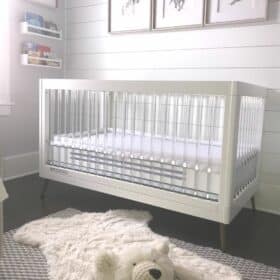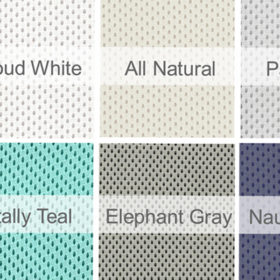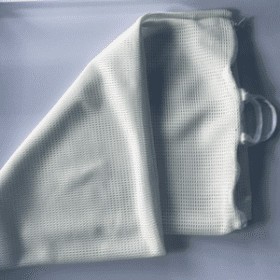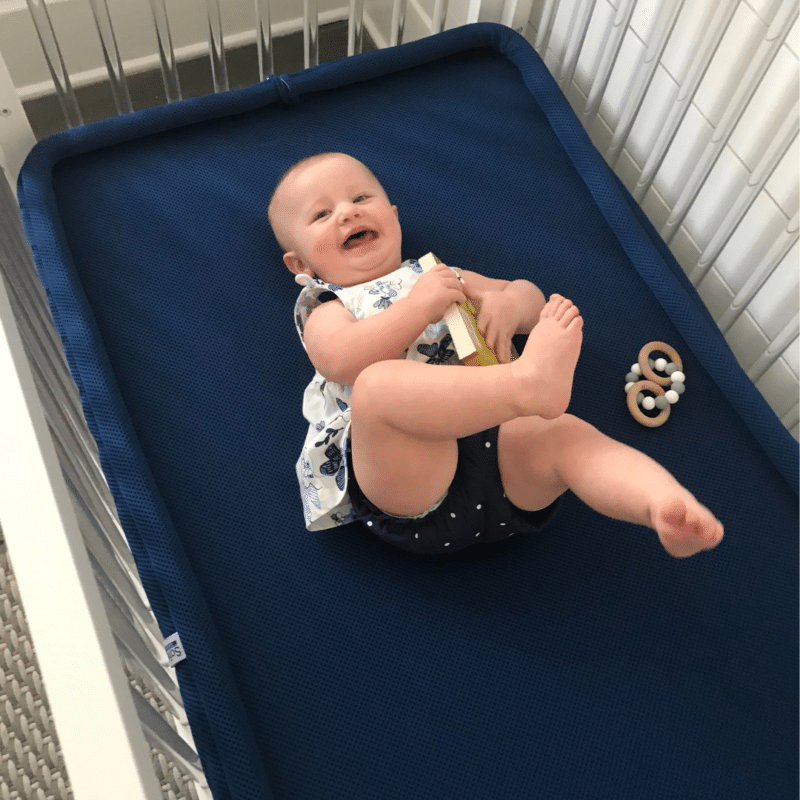No products in the cart.
Crib Mattress Facts
Firm Crib Mattress – The Truth Please
A firm crib mattress – CAN WE PLEASSSEEE SET THE RECORD STRAIGHT?
How many of you are led to believe that your baby needs a firm crib mattress to “properly” support their bone and skeletal growth? This may surprise you, but it’s not true!
Want more information on crib mattresses? Visit, Baby Mattress for Crib – Information from the Professionals
Infants have soft bones
It’s true that infants have soft, malleable bones. In fact, their skull is like puzzle pieces that flex so they can get out of the birth canal. Over time, their skull fuses together and hardens. Also, a lot of what will eventually be harder bones and cartilage, start out rather soft in infants.
Take an infant’s nose for example, their nose continues to develop after birth. Infants are obligate nose breathers, meaning they only breathe through their nose, for the first six months.
Their nose bones and cartilage are softer than an adult which allows it to flatten and still receive oxygen. Their nose bones and cartilage will become denser as they become adults.
Infant Growth Phases
Let’s take a logical approach to setting the record straight about firm crib mattresses. A human’s fastest growth phase is from conception to birth – 9 months on average. If this growth phase were sustained, we would grow two feet a year.
Looking at this rapid growth phase, are these babies on a hard or firm surface? No, they are in liquid which cradles their developing structures including their bones. It’s the ideal environment nature intended.
A human’s next fastest growth phase is from birth to 12 months, so why during this second fastest growth phase do you want to have them on a firm surface? I can assure you, it’s not for proper support of their bones and skeletons!
Examples
Case in point – plagiocephaly, also known as flat head syndrome. This condition in infants started appearing in the mid 1990’s with the onset of the back-to-sleep campaign.
This condition is attributed to infants sleeping on their back with positional pressure from firm objects on their soft, malleable skulls. I believe plagiocephaly is convincing enough to realize that a hard, firm crib mattress or sleep surface is not the ideal condition for a baby’s bone and skull development.
Next, let’s look at infant hip dysplasia. Did you know hip dysplasia is more common in first born infants? Why? Because a mother’s womb is the tightest during her first pregnancy and loosens with each subsequent pregnancy.
Physicians believe a baby’s womb position can increase pressure on the hips. The positioning of the baby in the womb can cause more pressure on hip joints, stretching ligaments.
It’s thought that babies in a normal position in the womb have more stress on the left hip than on the right hip. This explains why the left hip on infants tends to be more affected.
Hip dysplasia in infants is another convincing factor supporting that firm crib mattresses, which cause positional pressure, are not the ideal surfaces for infant’s bone and skeletal health.
Why does the AAP recommend a firm crib mattress?
So why does the American Academy of Pediatrics (AAP) recommend a firm baby mattress? There is only one reason the AAP recommends a firm crib mattress and that is to keep a sleeping baby safe. The AAP’s Safe Sleep Task Force Members are aware that a baby’s ideal sleeping condition for their bone and skeletal growth is for them to be gently cradled and also to sleep on their tummy.
However, through much research, the AAP has discovered that the “safest” way for an infant to sleep is on their back, on a firm crib mattress or surface.
The argument is infants are dying on soft surfaces and while tummy sleeping. Babies are not dying from Plagiocephaly, hip dysplasia and other bone and skeletal issues.
A firm crib mattress or sleep surface does nothing positive to support your bones and skeletons as they develop and grow as some crib mattress manufacturers would like you to believe.
Find out more on why your infant needs a firm baby mattress.
Problem with soft surfaces
Soft crib mattresses and surfaces are known to trap carbon dioxide, exhaled air, and block infant’s airways. SIDS experts believe carbon dioxide rebreathing is the common risk factor associated with infant sleep related deaths. SIDS
Experts believe some infants do not respond by turning their heads when rebreathing their exhaled air (carbon dioxide). If an infant rebreathes their carbon dioxide without responding, the carbon dioxide eventually suppresses their need to breathe, making it lethal.
Ideal sleep surface for baby
The ideal sleeping surface for your baby is a baby mattress that does not have any fill to cause positional pressure while still being firm to prevent carbon dioxide accumulation or suffocation when your baby rolls over.
Your baby will sleep for up to a total of 20 hours per day so making sure your baby has a safe place to sleep is crucial. The creators of the only completely breathe-through crib mattress found out the hard way what can happen if an infant rolls in the middle of the night even if on a firm crib mattress.
The pair (a product designer and a pediatrician) set out to create a crib mattress that addresses all the issues with fiber fill crib mattress in 2010. In 2016, their design was recognized by leading physicians as the “Gold Standard for safe infant sleep.”
The SafeSleep® is rated as the best crib mattress based AAP Safe Sleep Guidelines, and published studies. The SafeSleep® has passed the Australia/New Zealand firmness testing and standards. It’s a firm crib mattress. However, it does not add positional pressure to an infant’s delicate skull.





